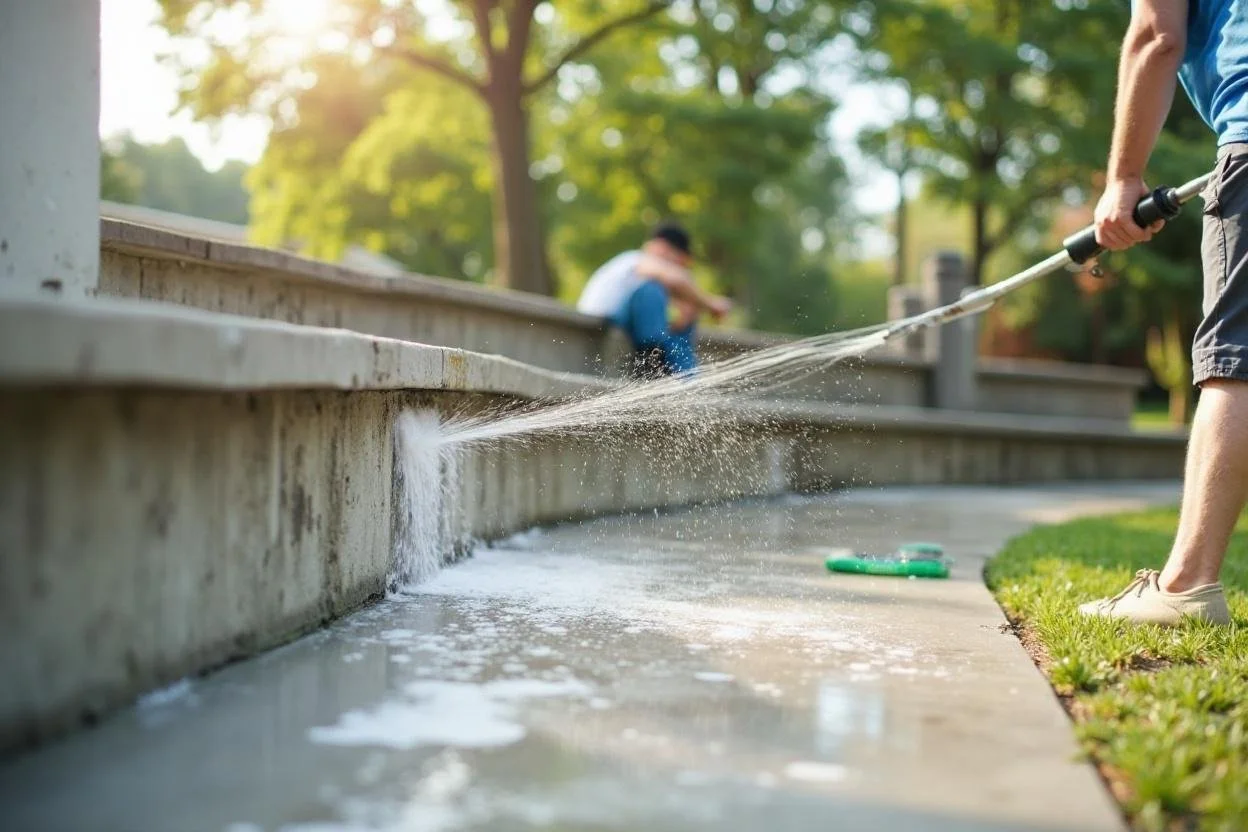Retaining Wall Maintenance Guide (Practical Tips)
Maintain your retaining walls by inspecting them twice each year, cleaning surfaces regularly, and clearing drainage systems. You also need to control weeds, repair cracks, and apply protective sealants every 3–5 years.
This guide explains how to maintain your retaining wall in detail. If you have more questions or need retaining wall construction in North Carolina, call Functional Foundations at (252) 648-6476.
Practical Retaining Wall Maintenance Tips for North Carolina Homeowners
North Carolina homeowners can maintain retaining walls by regularly inspecting for damage, ensuring proper drainage, and performing timely cleaning. It's also important to control weeds, repair any gaps or cracks right away, and apply protective sealants.
Below, we dive deeper.
Perform Regular Inspections to Catch Issues Early
Carefully inspect your retaining walls at least twice a year. Look closely for visible cracks, uneven sections, or loose stones. Frequent inspection ensures you spot problems before they affect wall stability.
It's important to schedule an additional inspection after severe weather, like storms or heavy rain. Such weather conditions can quickly impact retaining walls, making regular checks crucial. Timely inspection helps prevent significant damage and keeps repair costs manageable.
Cleaning Your Retaining Wall to Prevent Dirt and Mold Buildup
Cleaning is a simple but important part of retaining wall maintenance. North Carolina's climate promotes mold, mildew, and dirt accumulation on walls, which affects appearance and durability. You can clean your wall effectively by using a soft brush, mild detergent, and water. Concrete retaining wall maintenance often involves gentle pressure washing to safely remove tough dirt.
It's recommended to schedule cleaning sessions twice a year, during spring and fall, to avoid heavy buildup. Regular cleaning keeps your structures looking good and helps extend their lifespan significantly.
Ensure Proper Drainage for Retaining Wall Stability
Proper drainage is one of the most critical considerations for retaining wall stability. Without good drainage, water accumulates behind walls, creating intense pressure. Over time, this pressure weakens the wall structure, causing potential failure or costly repairs.
To ensure your structures maintain their stability, keep drainage systems clear of debris. Install gravel or drainage pipes behind walls if needed. Regularly check drains during routine inspections to confirm they're functioning properly, especially during rainy seasons in Asheville.
Manage Weeds to Protect Your Retaining Walls
Controlling weeds helps protect your retaining walls. Although weeds seem harmless, their roots grow into wall gaps, gradually causing cracks and structural weaknesses. Regularly remove weeds around and between wall stones manually or use safe weed-control methods.
Including weed management in your wall routine helps prevent costly wall repair issues. Check regularly for new weed growth during inspections, especially in spring and summer when they are most aggressive.
Fill Gaps and Repair Cracks Quickly for Long-term Stability
Prompt wall repair maintains structural integrity and safety. Small cracks or gaps can quickly become major structural issues if ignored. Repair minor gaps and cracks immediately with appropriate fillers like mortar for stone or concrete patch for concrete walls.
Early repair prevents further deterioration and saves you significant money in retaining wall maintenance costs. Always keep basic repair materials on hand to promptly address minor problems as they appear.
Apply Sealants to Protect Concrete Retaining Walls
Applying a protective sealant is beneficial, especially for concrete retaining wall maintenance. Moisture and temperature swings cause concrete deterioration over time. A quality sealant prevents moisture absorption, staining, and minor cracks, prolonging the life of your wall.
You should apply sealants every 3–5 years. Choose a product specifically recommended for concrete retaining walls. Proper sealant application significantly reduces the maintenance needs of your structures, providing long-lasting protection.
Consider a Professional Retaining Wall Maintenance Inspection
Professional inspections provide thorough checks beyond what you can see. Experts quickly spot hidden structural concerns and drainage problems, giving you peace of mind. Hiring professionals every 2–3 years is a wise investment to protect your retaining wall.
The retaining wall maintenance cost of professional inspection varies, but it is generally affordable compared to potential repair expenses. Homeowners who schedule professional maintenance inspections regularly benefit from increased wall longevity and structural reliability.
Secure Your NC Home With Professionally Constructed Retaining Walls
Protect your North Carolina property with durable and expertly constructed retaining walls. At Functional Foundations, we specialize in building stone and concrete retaining walls that provide lasting stability and enhance your landscape.
Our skilled professionals construct reliable structures tailored to your property’s unique terrain and guide you on essential maintenance tips to keep them strong and attractive for years.
Don’t compromise your home's safety. Call us today at (252) 648-6476 for your free consultation and invest in structures designed to last!
FAQs
Do retaining walls need maintenance?
Yes, your retaining wall needs regular maintenance to stay structurally sound and safe. Routine tasks include inspecting, cleaning, repairing minor damage, controlling weeds, and ensuring good drainage.
What are the important considerations for the Maintenance of Retaining Walls?
Important considerations for maintaining retaining walls include regular visual inspections, proper drainage, controlling weed growth, timely repairs, and applying protective sealants.
How to Take Care of a Retaining Wall Effectively?
To take care of a retaining wall, inspect it regularly, clean surfaces seasonally, remove weed promptly, quickly fix any visible damage, and periodically apply sealants.


